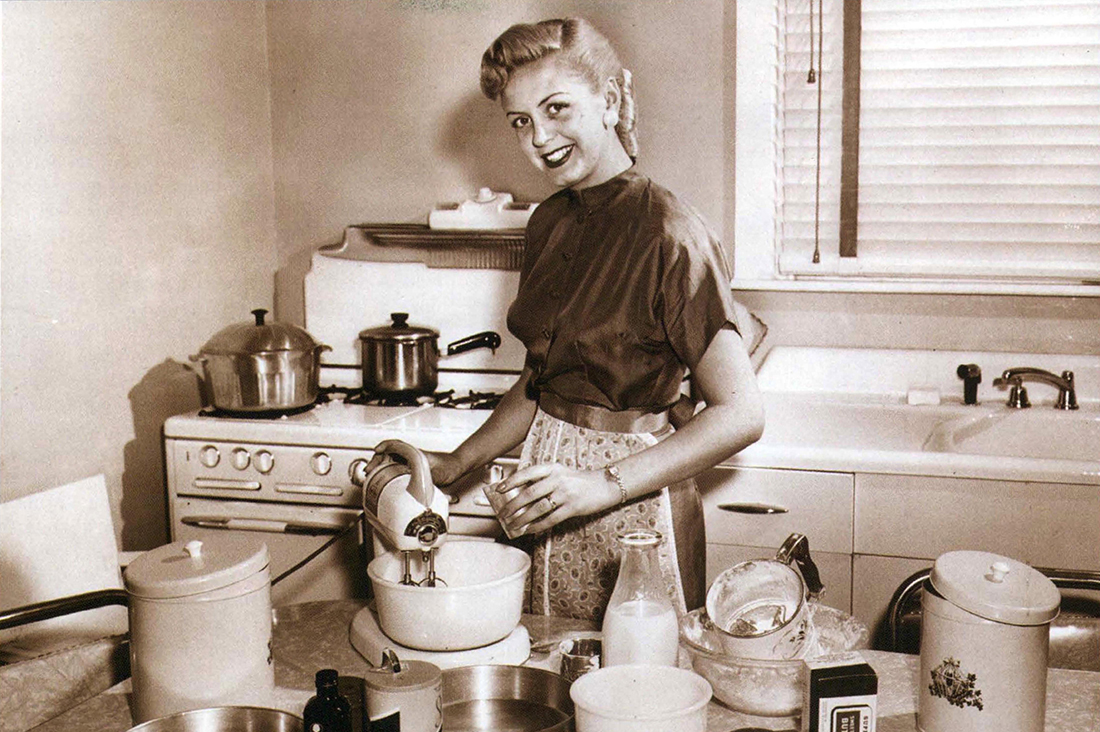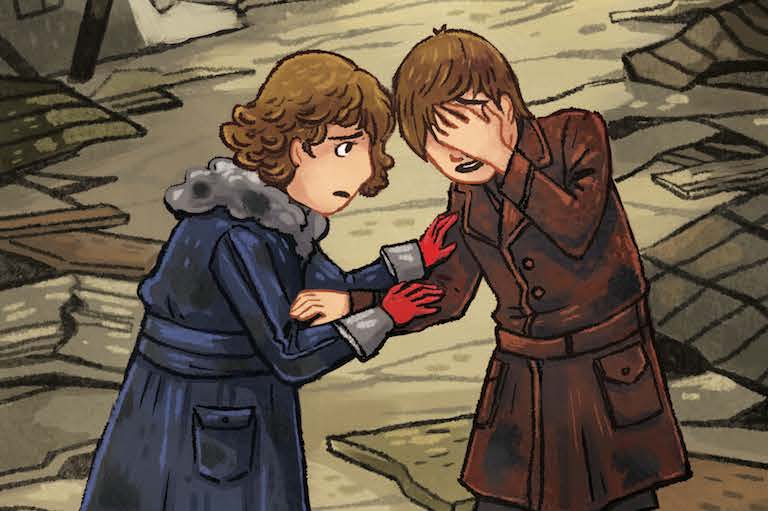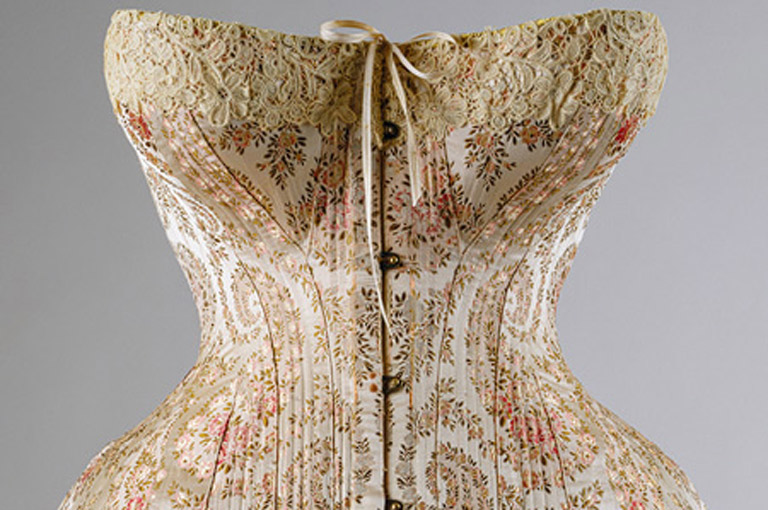Cooking with Nellie
-
 Nellie Lyle Pattinson (1878-1953) was director of domestic science at Toronto’s Central Technical School when she was asked by the struggling Ryerson Press to edit a new Canadian book of recipes.Hulton Archives
Nellie Lyle Pattinson (1878-1953) was director of domestic science at Toronto’s Central Technical School when she was asked by the struggling Ryerson Press to edit a new Canadian book of recipes.Hulton Archives -
 The Canadian Cook Book which went through 20 printings between 1923 and 1951, saved the press from insolvency, sparked changes in the role of women, and helped foster Canada’s national identity.Toronto District School Board Museum & Archives
The Canadian Cook Book which went through 20 printings between 1923 and 1951, saved the press from insolvency, sparked changes in the role of women, and helped foster Canada’s national identity.Toronto District School Board Museum & Archives
When minister Lorne Pierce became editor of the publishing arm of the United Church of Canada, he faced a steep challenge. The Ryerson Press, founded in 1829, was one of the country’s oldest book publishing ventures, but in 1920 it was in deep trouble financially.
“It was virtually at a standstill,” according to The Ryerson Imprint, a history of the firm published in 1954. “The Press had contracts with the Ontario government for printing text books and nothing more. New publishing houses were springing up, some of them founded by former employees.”
Pierce’s survival strategy was based primarily on conventional Canadiana: biographies, history, art books. But it was one bit of serendipity or outright publishing genius that saved the company. Pierce committed to creating the Canadian Cook Book, which he felt would tap into increasing nationalism with its emphasis on Canadian products. It quickly became a bestseller and remained so for decades.
In 1951, after a phenomenal 20 printings, Pierce still wouldn’t take credit. “No one knows whether a book is a sure-fire proposition or not,” he said modestly.
To edit the book, Pierce chose culinary whiz Nellie Lyle Pattinson. Pierce was certain she was tailor-made for the project. Born Oct. 24, 1878, in Bowmanvilie, 60 kilometres east of Toronto, Pattinson graduated from the University of Toronto’s household science course in 1907. She was a “physiological chemistry” instructor there until 1915, when she was hired to teach at Toronto’s new Central Technical School, one of Canada’s first technical schools. With Annie Laird, the first household science principal at U of T, Pattinson authored a 1917 book of recipes developed at Central Tech. In 1920 she became the school’s director of domestic science.
In that era, women had to choose between career and marriage. Pattinson was single. Teachers’ salaries were low (and lower for women than men) but book royalties helped her buy a house on an upper-middle-class street. She belonged to the Garden Club of Ontario and the Rose Society of Ontario. Quaker Oats briefly had her endorse its cake flour, and an annual award in her name was presented to female Ontario College of Education students intending to teach home economics. Pattinson was clearly a leading professional in her field.
Historians hail the Canadian Cook Book as a landmark. Lorne Bruce, head of archival and special collections at the University of Guelph, which houses Canada’s foremost archival cookbook collection, says: “It was Canada’s first mass-produced cookbook, emphasized nutrition, [reflected] the pre-World War I development of household science economics courses, which combined arranging menus, home administration, budgeting, finance, and efficiency with cooking and serving, and … the postwar liberation of women through related workplace positions. Using ‘Canadian’ was inspired, tying it to Canada’s growing independence from England.”
Elizabeth Driver is Canada’s leading cookbook historian and author of Culinary Landmarks: A Bibliography of Canadian Cook Books 1825-1949. She too cited Pattinson’s book as very modern for its time.
“It was the first to secure a place nationwide in English-language home economics classes, and reflected society’s belief that a woman’s role was to nurture the family with good nutrition and a clean home. Its large-quantities chapter reflected social life revolving around church suppers and large family gatherings. It was right up to date with diabetic recipes; insulin had been developed just two years before. Its invalid food section was vital since most nursing was then done in the home.”
Says Margaret Fraser, coauthor of A Century of Canadian Home Cooking: 1900 Through The ‘90s, “It replaced ‘a handful of this’ passed from generation to generation with properly tested recipes and accurate measurements.”
The content was truly Canadian. “Canada did not import American flour but made its own,” explains Jill Snider, economist at flour producer Robin Hood Multifoods. “Because our superior hard winter wheat contained more gluten, Canadian recipes had to be tenderized with more liquid and fat [butter, lard, shortening] and leavened with baking powder. Both countries had all-purpose flour - Robin Hood since 1927 - but unlike today, it was not presifted. Also, Canadians used less sugar since they had less of a sweet tooth than Americans.”
With 7 uniquely curated newsletters to choose from, we have something for everyone.
Cookbook historian Driver added: “There were few chicken recipes because chicken was expensive. Cookies were listed under small cakes; the term ‘cookie’ was used in the United States. Pickling and chili sauces were very Canadian; they brightened up winter meals as there were no [imported] fresh vegetables then. Every child learned how to make milk pudding; milk was considered essential for children and the recipe was easy to memorize.”
In the early 1950s Ryerson Press decided the cookbook should be updated to reflect modern times. Then in her 70s, Pattinson didn’t want the arduous chore. She hoped a great-niece or other relative would take it on, but they were not interested.
Ryerson chose two replacements—Helen Wattie, an acquaintance of a Ryerson book salesman, and Elinor Donaldson, proposed by a childhood playmate of her mother, who had become a home economics school inspector.
Wattie was born in 1911 in Bracebridge, Ontario. She taught home economics in St. Catharines and Kirkland Lake, and in 1950 became head of the new home economics department at Ryerson Institute of Technology (later named Ryerson Polytechnical Institute, now Ryerson University). Donaldson was born in 1926 in Windsor and grew up in Toronto. She taught at Ryerson in 1952 and ’53, then at Kapuskasing, Ontario.
Wattie, now 94, lives in a Toronto retirement lodge. Beautifully coiffed and smartly dressed in a green pantsuit, she had prepared notes for our interview. Donaldson, now Elinor Whyte, lives in St. Lambert, a Montreal suburb. Equally organized, she also prepared notes in addition to a telephone interview.
Fifty years have passed since the single occasion they met Pattinson, but they remember it vividly: “She wore a beautiful silver-grey suit with black velvet and was a lady in every way,” Wattie recalls. “She said of our revision, ‘It’s not what I would have done but times change and I’m pleased’.” Whyte added: “She was a very gracious lady. She said, ‘You’re adopting my baby’.”
Pattinson died of a stroke in April 1953; the revision was published later that year.
From then on, the title was Nellie Lyle Pattinson’s Canadian Cook Book, capitalizing on her reputation. The famous blue binding was ended and a colourful jacket added. Previously there had been few illustrations, all black and white, primarily diagrams of cuts of meat. The revision matched competitors with colour food photos. To reflect modern trends, chapters on appetizers, pressure cooking and freezing were added. So were regional dishes and ethnic foods, reflecting Canada’s increasing multiculturalism.
“Young men back from the battlefields in Europe wanted such exotic foods as pizza, which Miss Pattinson had never heard of,” Wattie recalls.
The number of chicken recipes went from just 5 in early editions to 35 in 1977, rice recipes from 8 to 34 and cookies from 38 to 61. Emphasis was placed on economy (powdered rather than liquid milk, cookie crumbs to decorate parfaits or for pie crusts) and nutrition (peanut butter, dried peas and cottage cheese as alternatives to meat, fish and poultry.) Later editions were expanded. The last, in 1991, contained 1,400 recipes, and cost $24.50.
Wattie and Whyte contributed family recipes. Wattie’s most unusual was derived from a trip her father made to northern Ontario—moose cubes cooked in water or wine with noodles, chopped olives or pimento. Whyte provided her mother’s “Butterscotch Jiffy Pudding” and her own chili relish.
“One year we made multiple batches and had to use the bathtub when we ran out of crocks,” Whyte laughingly recalls.
Sales remained strong. “It still sells about 10,000 copies annually,” the Globe and Mail reported in 1963. (A best seller in Canada is 3,000 copies.) In 1979 it was Toronto’s third top-selling cookbook after The Joy of Cooking and Better Homes and Gardens New Cook Book, both American.
When McGraw-Hill Canada acquired Ryerson Press in 1970, it continued publishing the cookbook. But by the 1990s the book’s broad scope was considered quaint in an era of specialty cookbooks, and it was discontinued.
“Quick mixes, take-outs, and ever-changing fads have made basic cookbooks less necessary,” Whyte says.
But many households, ours included, still own well-worn copies fondly handed down from generation to generation.
CHOCOLATE CAKE
1/3 c. butter.
2 c. brown sugar.
2 eggs.
1/2 c. grated chocolate.
1/2 c. boiling water.
2 c. flour.
1 t. baking soda.
1/4 t. salt.
1/2 t. vanilla.
1. Cream the butter, add sugar slowly.
2. Add eggs, beaten very light.
3. Melt chocolate over hot water; add boiling water and mix smooth.
4. Sift in flour, soda and salt.
5. Add vanilla.
6. Pour into buttered pan.
7. Bake in slow oven 40 to 50 mins. Temperature 300 to 325 degrees F.
We hope you’ll help us continue to share fascinating stories about Canada’s past by making a donation to Canada’s History Society today.
We highlight our nation’s diverse past by telling stories that illuminate the people, places, and events that unite us as Canadians, and by making those stories accessible to everyone through our free online content.
We are a registered charity that depends on contributions from readers like you to share inspiring and informative stories with students and citizens of all ages — award-winning stories written by Canada’s top historians, authors, journalists, and history enthusiasts.
Any amount helps, or better yet, start a monthly donation today. Your support makes all the difference. Thank you!
Themes associated with this article
Advertisement
Save as much as 40% off the cover price! 4 issues per year as low as $29.95. Available in print and digital. Tariff-exempt!




